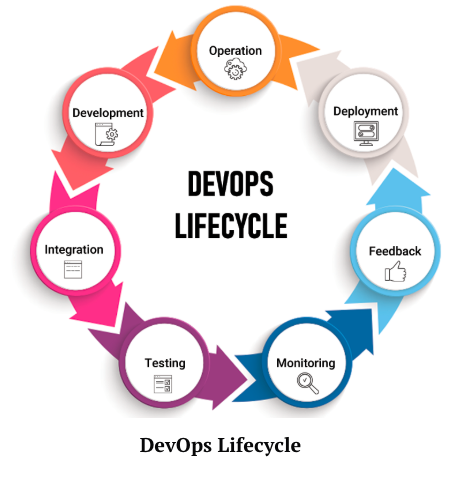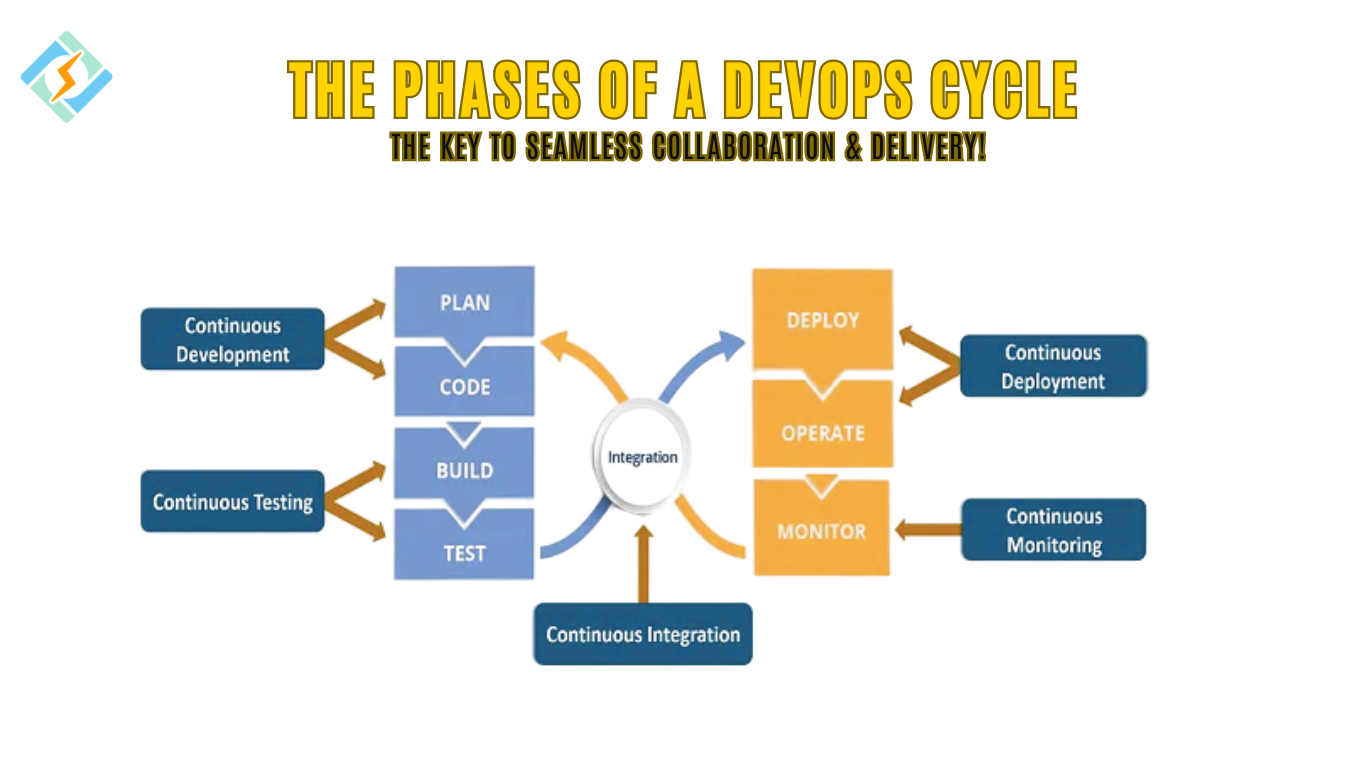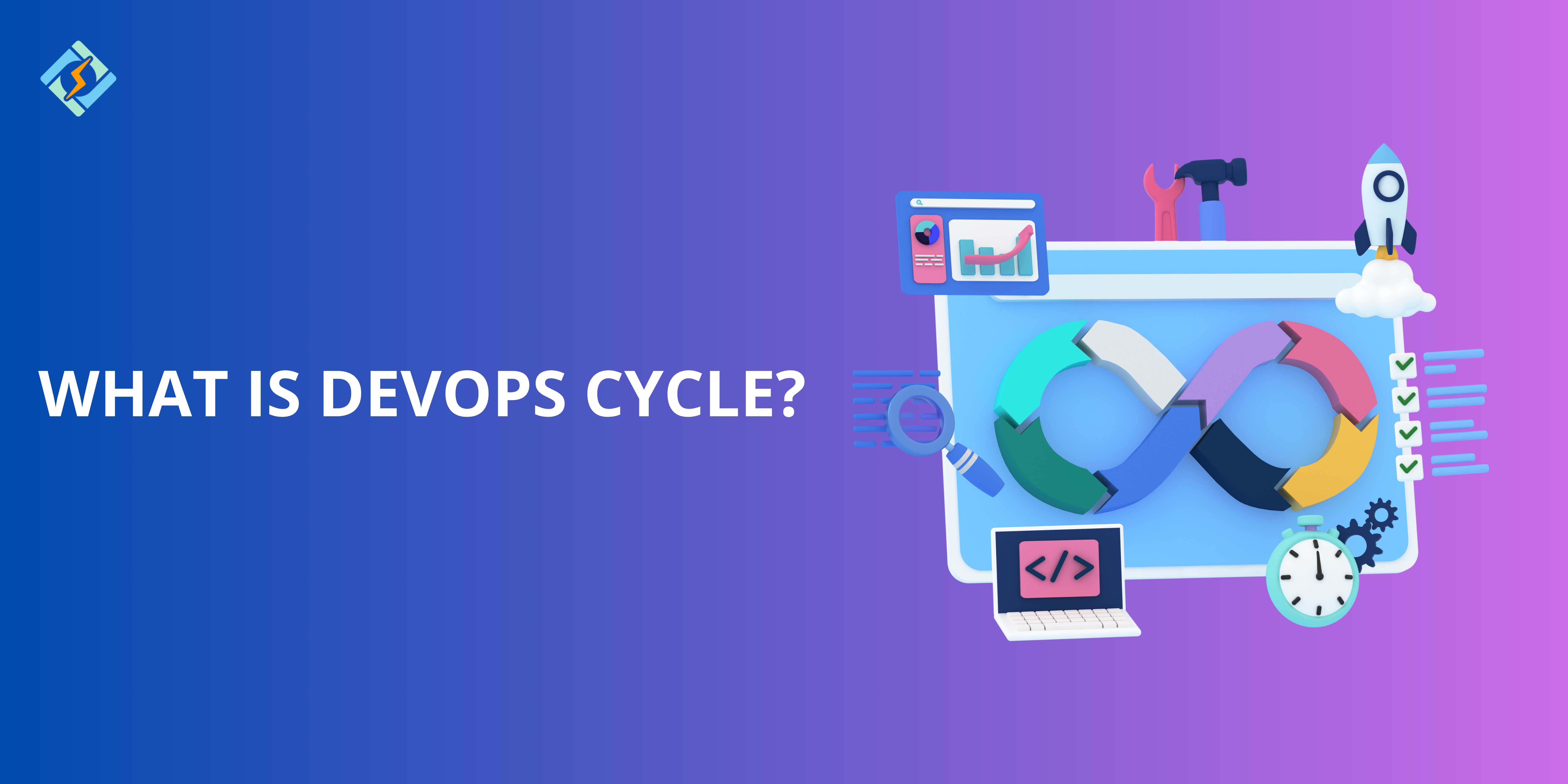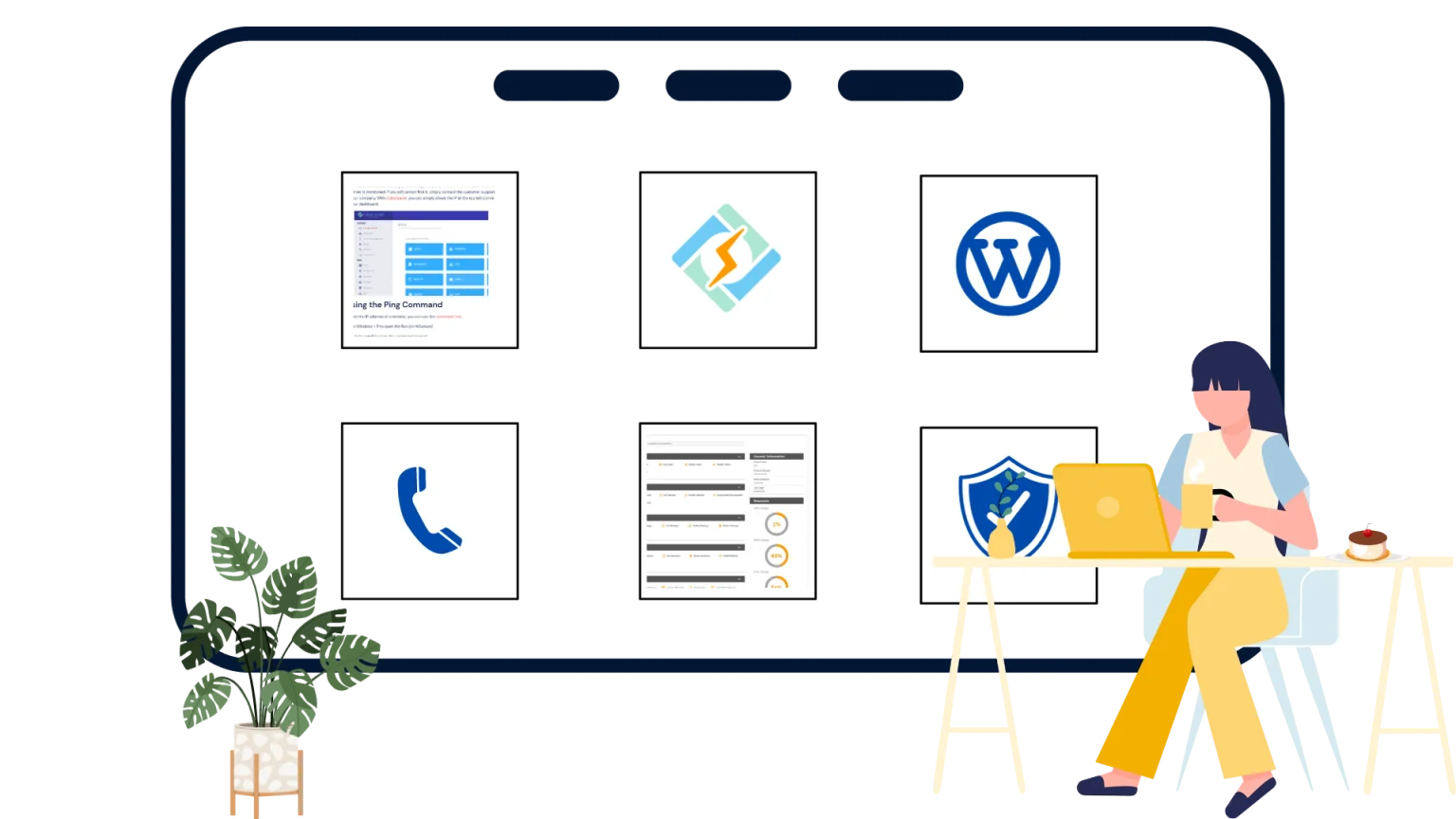DevOps cycle is the backbone of modern software development, combining development and operations to streamline the software lifecycle. It encourages collaboration, automation, and a continuous improvement process to enhance workflow and results.
The DevOps lifecycle consists of seven distinct phases of continuous development that drive the software development process from start to finish. In this guide, we explore the 7 stages of the DevOps software development life cycle, the 7 C’s, the best tools for each stage, challenges and best practices. So Let’s explore!
What is the DevOps Cycle?

The DevOps cycle contains various stages of continuous software development, integration, testing, deployment, and monitoring. A well-structured DevOps lifecycle is essential to fully realize the advantages of the DevOps approach.
The DevOps life cycle includes phases that involve both Development and Operations tasks, aimed at speeding up software delivery. It employs specific practices such as coding, building, testing, releasing, deploying, operating, monitoring, and planning.
For developers to achieve quicker outcomes, they need to have a clear understanding of each phase of the DevOps life cycle. Without this knowledge, the development process can become complicated and lengthy. The DevOps cycle consists of continuous development, integration, testing, monitoring, and feedback, with each phase utilizing specific tools and technologies to facilitate the process.
The 7 Key Stages of the DevOps Cycle
To understand the DevOps cycle it’s crucial to understand it’s 7 phases, let’s explore them in detail.
Get exclusive access to all things tech-savvy, and be the first to receive
the latest updates directly in your inbox.
- Plan – Strategy, roadmap, collaboration tools
- Develop – Coding, version control, agile methodologies
- Build – Continuous integration (CI), automation
- Test – Automated testing, QA, bug tracking
- Release – Deployment strategies, blue-green & canary releases
- Deploy – Continuous delivery (CD), containerization, Kubernetes
- Operate & Monitor – Logging, performance monitoring, incident management
1. Plan
The planning stage is all about mapping out the project’s lifecycle. Unlike traditional development approaches, this model recognizes that each phase may need to be revisited as required. This means the DevOps workflow is designed with future iterations and previous versions in mind. Essentially, insights from earlier iterations will help shape the next one, and the current iteration will also provide valuable feedback for what’s next. This phase typically involves collaboration from all teams to ensure every aspect of the planning is covered.
2. Code
During the coding stage, developers will write and prepare the code for the upcoming phase. They will follow the specifications set during the planning stage, ensuring that the code aligns with the project’s operational needs.
3. Build
In this phase of the DevOps cycle, the code is integrated into the project, and if necessary, the project may be restructured to accommodate the new code. This can be done in various ways, but platforms like GitHub or similar version control systems are commonly used. The developer will submit a request to add the code, which will then undergo a review process. If the code meets the requirements, the request will be approved, and the code will be incorporated into the project. This approach works well for adding new features and fixing bugs.
4. Test
During the testing phase, teams will conduct all necessary tests to ensure the project functions as intended. They will also check for edge cases and corner cases at this stage. An “edge case” refers to a bug that appears only under extreme conditions, while a “corner case” arises when multiple specific conditions are met.
Over time, test automation lowers risk and improves software quality, making it an essential component of the DevOps toolchain. In the DevOps context, it helps detect risky regions, produces reports, and expedites development cycles.
5. Release
The release phase happens once the code has been confirmed as ready for deployment, and a final check for production readiness has been completed. If everything checks out, the project will move into the deployment phase.
6. Deploy
In the deploy stage, the project gets ready for the production environment and functions as intended there. The operations team usually handles this, but in a DevOps setup, it’s a shared responsibility. This collaboration encourages team members to work together to ensure a smooth deployment.
7. Operate
In the operating stage, teams put the project to the test in a live environment while end users start using the product. This important phase isn’t the end of the road; instead, it shapes future development cycles and oversees the configuration of the production environment along with any runtime needs.
8. Monitor
During the monitoring stage, the usage of the product, along with any feedback, issues, or areas for improvement, is tracked and recorded. This information is then passed on to the next iteration to support the development process. This phase is crucial for planning the upcoming iteration and helps streamline the development pipeline.
Key DevOps Tools for Each Stage
Plan
- Leverage tools like Jira, Confluence, and Slack to break tasks into smaller, manageable pieces for faster rollouts.
- Regularly collect user feedback and turn it into actionable insights.
- Prioritize tasks based on this feedback and promote “asynchronous brainstorming” sessions.
- Transform project features or scopes into user stories for the development backlog.
- Utilize integrations and feature flags to toggle features on and off as needed.
Build
- Implement open-source tools such as Kubernetes and Docker to set up individual development environments.
- Coding against virtual, temporary replicas of production environments boosts productivity.
Infrastructure as Code

- Use code for provisioning to develop modular applications.
- Re-provisioning is quicker and more reliable than fixing issues.
- Provisioning code can be applied repeatedly to restore a server to a known state.
- Capturing institutional knowledge in code minimizes the need for extensive run books and internal documentation.
Source Control and Collaborative Coding
- Utilize source control tools to manage code across different branches for seamless collaboration.
- Enhance code quality and efficiency through peer reviews using pull requests.
- Integration with other tools links various aspects of code development and delivery.
The 7 C’S Of The DevOps Cycle Explained

Ongoing Development and Delivery
- The DevOps process kicks off with planning and coding, focusing on ongoing enhancements through regular releases.
- Frequent software updates are promoted via continuous integration and continuous deployment (CI/CD).
- Feedback is utilized throughout the development process to spot issues and brainstorm solutions.
- The creation of source code and assets begins to keep production on track.
Continuous Integration
- Continuous Integration (CI) is a practice where developers merge their code into a shared repository multiple times a day.
- It emphasizes making many small, incremental changes instead of a few large ones.
- The main aim is to produce higher-quality code more quickly and minimize the time spent on testing and releasing updates.
Continuous Testing
- Continuous testing works alongside continuous integration, relying on automated tests instead of manual code checks.
- Based on our needs, we can implement continuous testing using automation tools like Testsigma, Selenium, and LambdaTest. These tools enable us to test our code efficiently, preventing issues and code smells while allowing for faster and more intelligent testing.
- The goal is to catch bugs as early as possible, which helps reduce the need for patches or hotfixes.
Continuous Monitoring
- Continuous monitoring keeps the DevOps cycle in check, ensuring a smooth user experience.
- Teams strive to identify and fix system errors promptly.
- Grafana and Prometheus allow for constant warning and monitoring.
- Prometheus gathers performance metrics such as error rates, network traffic, CPU and memory usage, and application response times.
- Time series data, such as CPU and memory consumption, may be visually represented and tracked with Grafana.
- Ongoing feedback is gathered to gain insights into software performance and inform product improvements.
Continuous Deployment
- Automated DevOps tools track updates to the source code and deploy them automatically into the production environment.
- This speeds up feedback loops with users through automation.
Continuous Operations
- This stage is all about fine-tuning applications and environments for optimal stability and performance.
- Through constant collaboration, bugs, feedback, and security issues are continuously shared, evaluated, and refined throughout the DevOps pipeline.
- Higher application uptime will help us cut down on the maintenance downtime that can negatively impact end users’ experiences. More output, lower manufacturing costs, and better quality control are benefits of continuous operations.
Continuous Feedback in the Development of Applications
- Used to evaluate and enhance the source code of applications.
- With Every release, client behavior is constantly monitored using structured or unstructured methods to get feedback.
- Structural method: Information obtained through surveys and questionnaires.
- Unstructured method: Social media sites are used to collect feedback.
- Important for enhanced program versions and ongoing delivery.
Challenges in the DevOps Life Cycle & How to Overcome Them
Here are major challenges that you may face:
Cultural Shift: Embracing DevOps often necessitates a change in the organizational culture to enhance collaboration between development and operations teams. Resistance to this change can slow down progress and hinder the adoption of new practices.
To overcome this resistance, it is important to promote a collaborative mindset and clearly communicate the advantages of DevOps, supported by strong leadership.
Tool Coordination: Merging different DevOps tools and technologies can be complicated. Organizations may struggle to ensure that these tools work well together and align with their workflows.
Effective integration demands thorough planning, compatibility checks, and extensive testing to guarantee that the tools function harmoniously.
Skill Development: The implementation of DevOps practices may highlight existing skill gaps within teams, as it requires knowledge in both development and operations. To bridge these gaps, organizations should invest in training and development initiatives to equip team members with the necessary expertise.
Ongoing learning and skill enhancement are crucial to keep up with the changing landscape of DevOps practices and tools. Supporting these efforts, a voiceover generator for presentations can create engaging, easy-to-follow training content that helps reinforce new skills across the team.
Process Adjustments: Adopting DevOps entails significant modifications to current processes and workflows, which can be difficult to navigate. Teams may need to update their development, testing, and deployment methods to align with DevOps principles.
Managing these adjustments requires careful planning, clear documentation, and continuous support to facilitate smooth transitions.
Security Integration: Incorporating security into the DevOps lifecycle (DevSecOps) presents challenges, as it involves embedding security practices throughout the development process. Try to maintain security without sacrificing delivery speed, which requires implementing strong security measures and ongoing monitoring. Achieving a balance between security and DevOps efficiency necessitates careful planning and dedicated resources.
Why Every Organization Should Adopt The DevOps Life Cycle
The 7 stages of the DevOps Cycle are a game-changer in modern software development. It eliminates bottlenecks and accelerates deployment which improves application quality. Planning, coding, building, testing, and deployment are important stages that organizations may concentrate on to increase cooperation, expedite release cycles, and streamline operations. Continuous monitoring and feedback throughout the lifecycle guarantee that applications are not only created fast but are also efficiently maintained with constant enhancements.
So if you’re looking to stay competitive in today’s software industry, implementing a well-structured DevOps Life cycle is no longer optional, it’s a must!
FAQ’s
1. What’s the DevOps life cycle all about?
Change block type or style
Move Paragraph block from position 70 up to position 69
Move Paragraph block from position 70 down to position 71
Change text alignment
Displays more block tools
The DevOps cycle consists of various stages that merge development and operations, allowing for continuous software delivery.
2. How is the DevOps cycle different from Agile?
While Agile emphasizes iterative development, DevOps takes Agile principles and adds automation to create smooth deployment and operational processes.
3. What tools are commonly used in the DevOps life cycle?
Some of the most popular tools are Jenkins, Docker, Kubernetes, Git, Ansible, Prometheus, and Terraform.
4. Where do CI/CD pipelines fit into the DevOps life cycle?
CI/CD pipelines streamline the processes of building, testing, and deploying software, ensuring quick and dependable delivery.
5. What are the main challenges when adopting DevOps?
Common obstacles in implementing DevOps include cultural resistance, the complexity of toolchains, and security issues.



